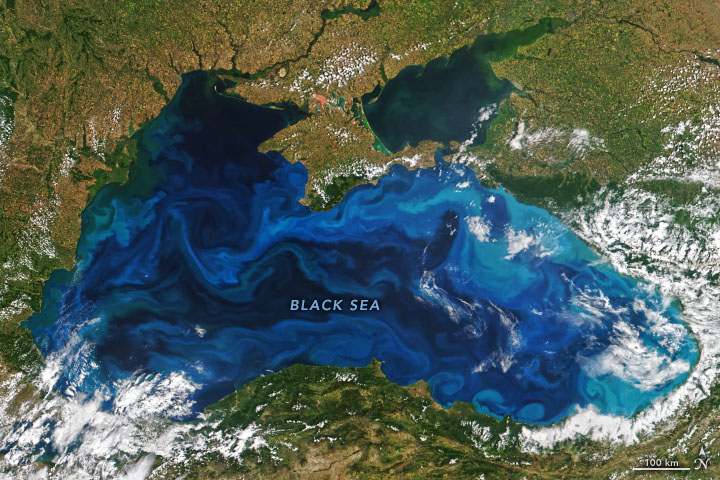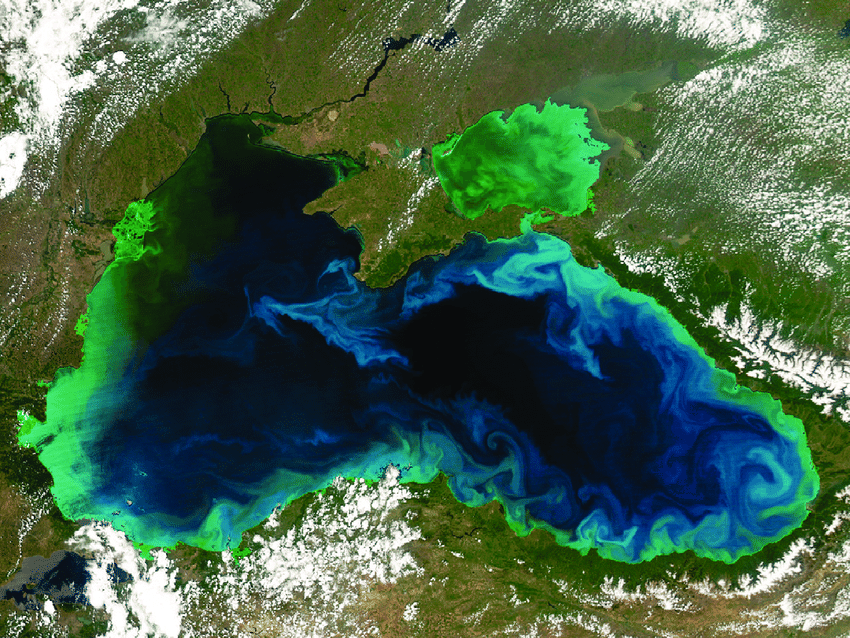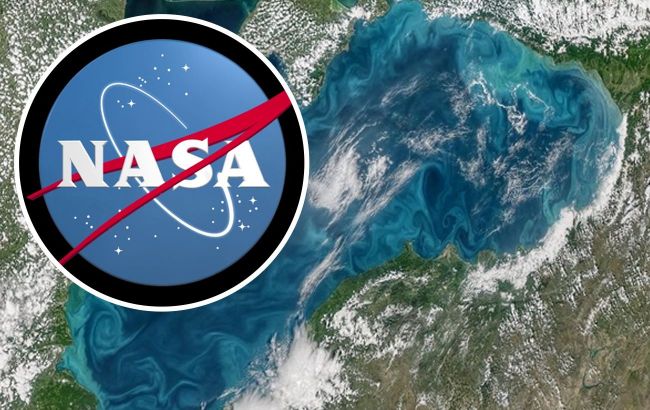Scientists have discovered a sharp change in the color of the Black Sea: if previously it had a deep dark blue hue in satellite images, it has now become emerald green. The greatest changes are observed off the coasts of Bulgaria and Romania, especially in the Danube Delta.
Phytoplankton explodes in the Black Sea: how it affects the ecosystem and the color of the water
In May, the Black Sea began to change color, and, according to scientists, this is due to the rapid growth of phytoplankton. Now, in satellite images, it has acquired an emerald green hue instead of the previous dark blue.
Color changes have already affected the coastal waters of Bulgaria and Romania, and by early June a similar phenomenon was recorded off the coast of Ukraine. The Aqua satellite captured these transformations in its images.
According to experts, a phytoplankton epidemic could cause a significant drop in oxygen levels in the Black Sea, which, in turn, threatens mass extinction of its inhabitants.
According to NASA experts, the phenomena occurring in May 2024 correspond to annual processes. The bright colors in the images indicate an intensification of the spring phytoplankton bloom in the Black Sea. A number of factors contribute to the rapid development of this bloom.

Large rivers flow into the Black Sea, including the Danube, Dnieper, Rioni and Dniester, which bring nutrients to this vast body of water. Pollution caused by human activities such as agriculture and industry also contributes to the explosive growth of phytoplankton.
Phytoplankton are single-celled algae and cyanobacteria that use sunlight to feed themselves. These microorganisms serve as food for large fish and shellfish. Phytoplankton plays the role of “producer” in the seas and oceans. These microscopic algae, bacteria and plant organisms use chlorophyll to convert sunlight and dissolved nutrients into food.
More than 150 species of phytoplankton have been identified in the Black Sea, which serve as a food source for many fish and other marine organisms.
Although phytoplankton are present in the Black Sea in relatively small quantities throughout the year, the combination of abundant nutrients, warm water temperatures and prolonged sunlight often causes their numbers to explode. This results in massive blooms that are visible even from space, forming swirls and patterns created by currents and eddies in the water.
Massive phytoplankton blooms: how to improve the health of marine ecosystems and protect the oceans
When phytoplankton begin to reproduce in large numbers, it can lead to serious environmental problems for marine ecosystems. Massive blooms of phytoplankton, known as algal blooms, can cause a significant decrease in oxygen levels in the water, which in turn threatens fish and other marine life.
What can be done to mitigate these threats? First, it is necessary to reduce the discharge of nutrients into water bodies, since excess amounts of fertilizers and organic matter contribute to the rapid growth of phytoplankton. This requires improving wastewater treatment systems and reducing agricultural runoff containing nitrates and phosphates.

Secondly, it is important to maintain and restore coastal ecosystems such as mangroves and seagrasses, which can act as natural filters for water and help control nutrient levels.
In addition, it is necessary to regularly monitor the state of sea waters and phytoplankton in order to quickly respond to changes and prevent mass blooms. Education and raising awareness among the population about the impact of human activities on marine ecosystems also plays a key role in addressing this problem.
Integrating these approaches will help minimize the negative impacts of phytoplankton on marine ecosystems and ensure healthy and resilient oceans for future generations.

